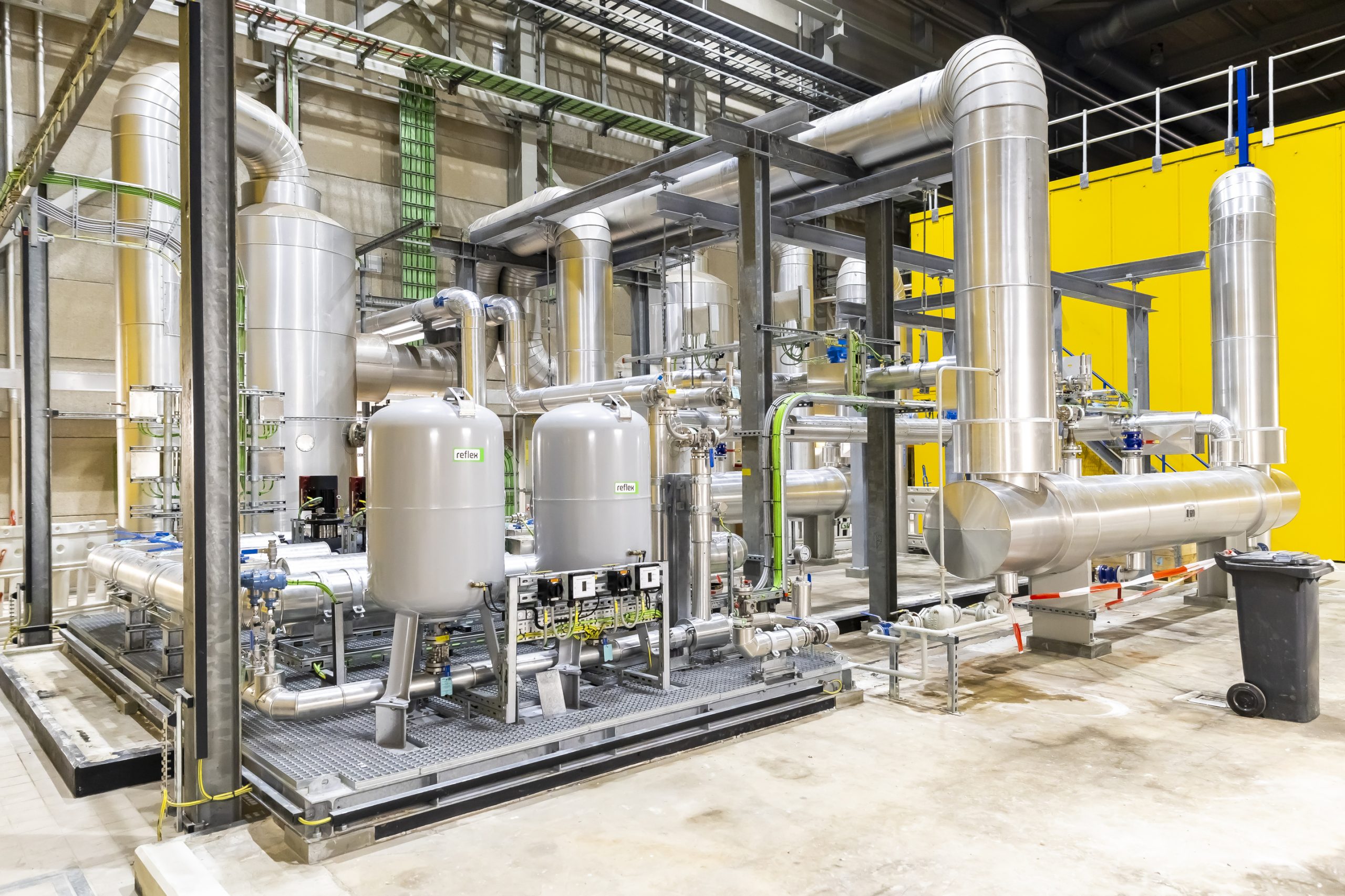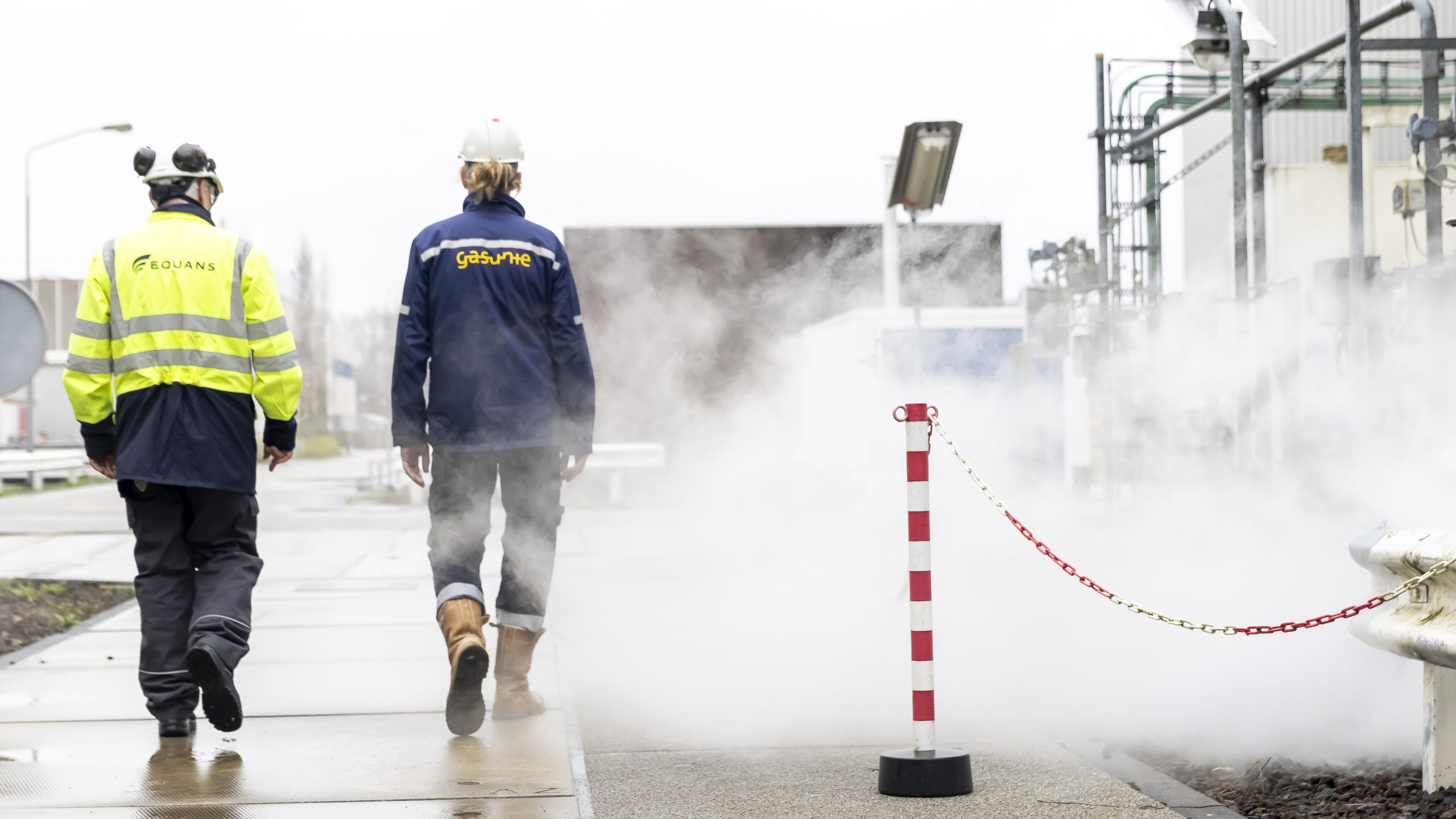Mixing gas with nitrogen
Gasunie manages the Dutch gas pipeline network and transports natural gas. A large number of transport pipelines come together at the Vilsteren site. The site is also home to the company’s nitrogen production facility. This nitrogen is used by Gasunie to mix it with imported gas. This gas often has a higher calorific value than Groningen gas. By mixing imported gas with nitrogen, the calorific value becomes equal to that of Groningen gas, making it suitable for Dutch households and industry.

The 4 nitrogen plants from Gasunie, require cooling. To separate oxygen and nitrogen, the air has to be compressed to a higher pressure. The disadvantage of this is that the air temperature rises, which is undesirable for the subsequent part of the process. Cooling can reduce the air temperature to an acceptable level. The current chillers, built by Equans in 1985, run on fluorinated hydrocarbon R507. “Although the chillers still work perfectly, this synthetic refrigerant has a Global Warming Potential (GWP) of almost 4,000 and cannot be used after 2030”, says Rindert Meerstra, project manager at Gasunie. “We therefore asked Equans to find the smartest way to replace the chillers in the nitrogen plant with a more sustainable option.”
Equans came up with a plan to replace the chillers in three 6-week periods, spread over several years. “During the shutdowns, we remove the old chillers and the refrigerant from the nitrogen plants”, says Danny van der Velden, project manager at Equans. “We replace them with a pre-assembled and pre-tested part of the new refrigeration system, called a skid. Finally, we connect the pipes and cables and commission the new installation. In this way, Gasunie can keep the nitrogen plant running as long as possible.” Gasunie included this idea in the tender specifications. As soon as Equans won the tender, they prepared for a multi-year project.


The new ammonia installation is essentially a secondary cooling system. Van der Velden: “The installation was deliberately placed on a raised platform outside the nitrogen plants. This allowed us to build and test it remotely, and not interfere with the nitrogen production. The system consists of 9 ammonia chillers that cool a glycol-water mixture. The cooled glycol-water mixture flows through pipes to the plants to cool the nitrogen plants. The new design combined the two smallest nitrogen plants. These have been using the new cooling system since the first shutdown in spring 2023.”

The second and third shutdowns will take place in the spring and autumn of 2024 when the two largest nitrogen plants will be connected to the new chillers. Meerstra: “A new installation requires a new control system. Since Equans supplies the control system for the chillers and Gasunie for the nitrogen plants, it required coordination. Before the shutdowns, we used simulation models to set up and test the software. After the first shutdown, we optimised the controls. This now serves as the design base for the two larger nitrogen plants.”
When the project comes to an end in 2024, Gasunie will have an ammonia-fuelled refrigeration plant with a GWP of 0, in compliance with legislation. At the same time, it will have a plant that is both quiet and energy efficient. Meerstra: “Our plant is located close to a Natura 2000 site. This means that the noise production of the new installation had to remain within strict standards. In the end, we have a plant that is within the contours of the noise standard, but also the standards of the EIA subsidy. In fact, the plant is about 15% more energy efficient.”


Although the project is still several months away, Meerstra is already positive about Equans’ commitment and cooperation. “An extensive lessons-learned session after the first shutdown was more of a celebration moment. Equans is more of a partner than a contractor. Whatever we run into, everything is done to solve it together. I have experienced this during the preliminary study, detail engineering, construction and commissioning. I therefore have every confidence for the upcoming shutdowns.”
Watch the video below (in Dutch) on the replacement of NH2 chillers at Gasunie.

Equans Reference Gasunie
"*" indicates required fields




